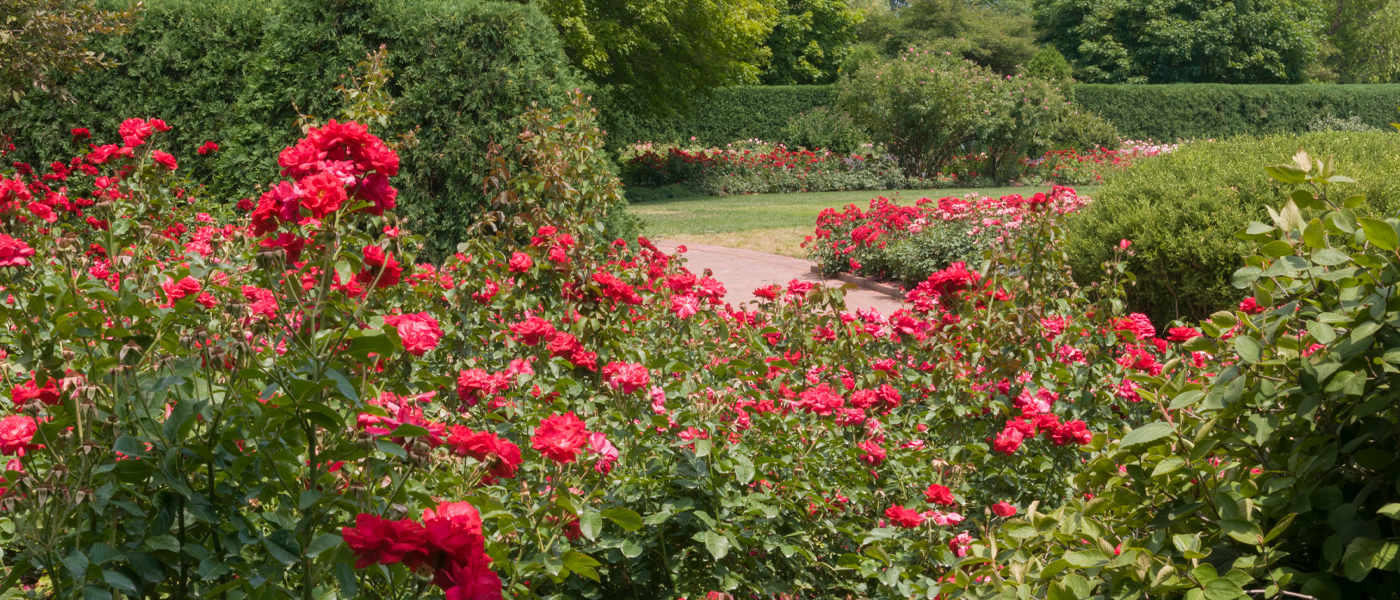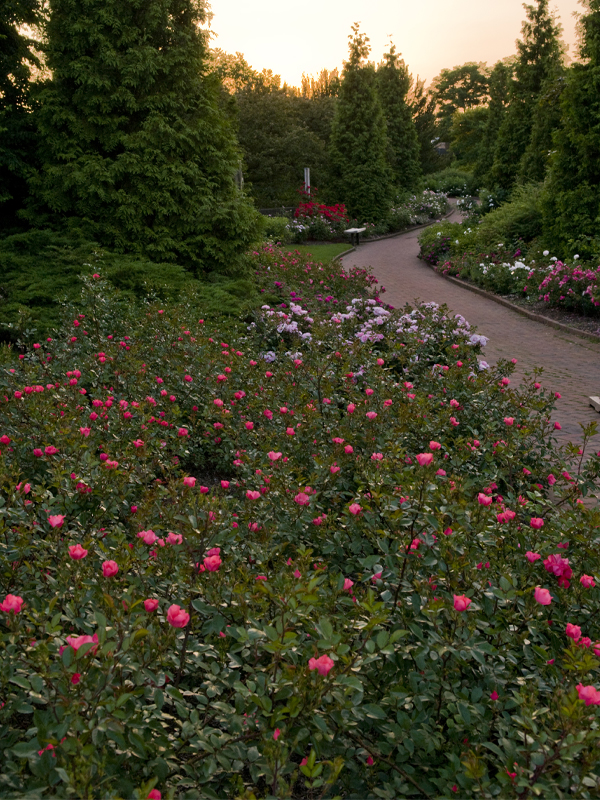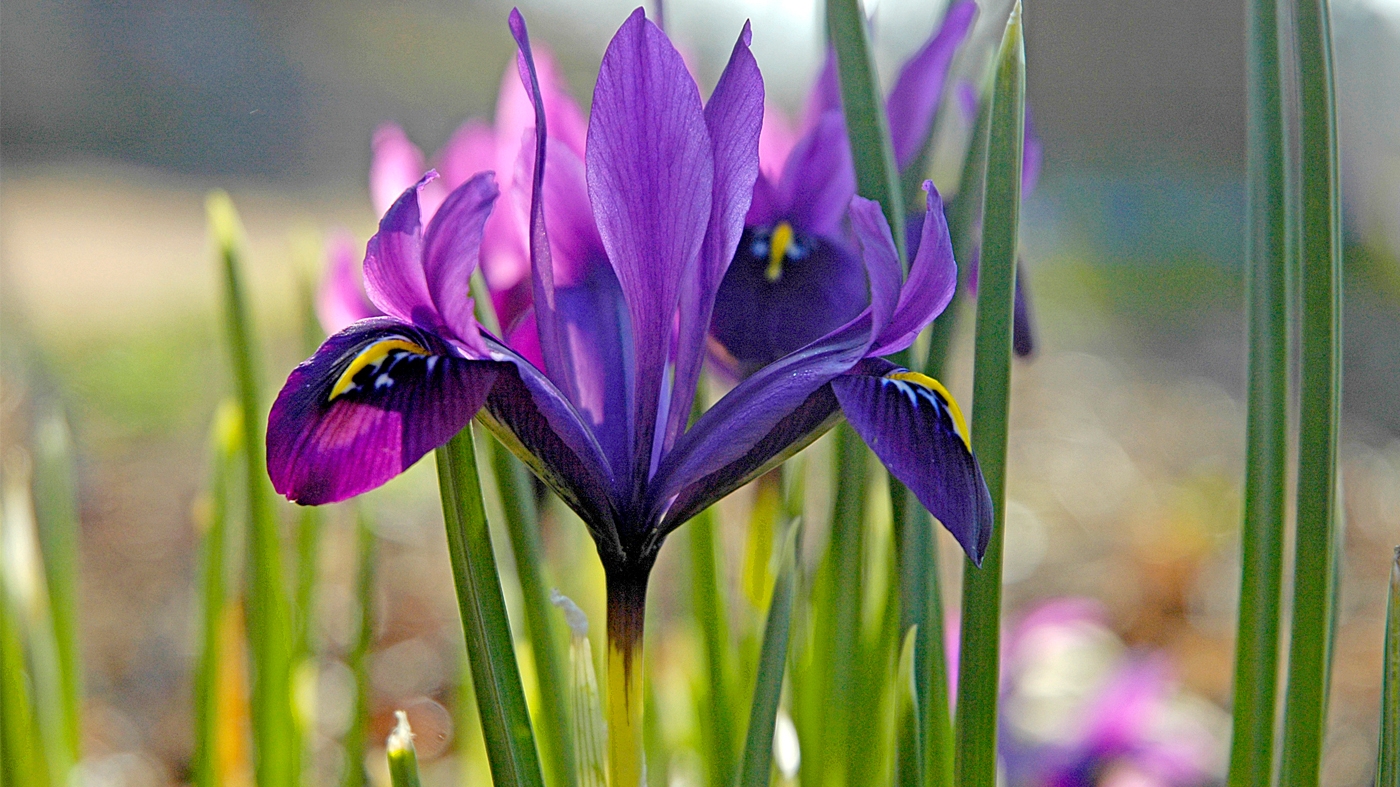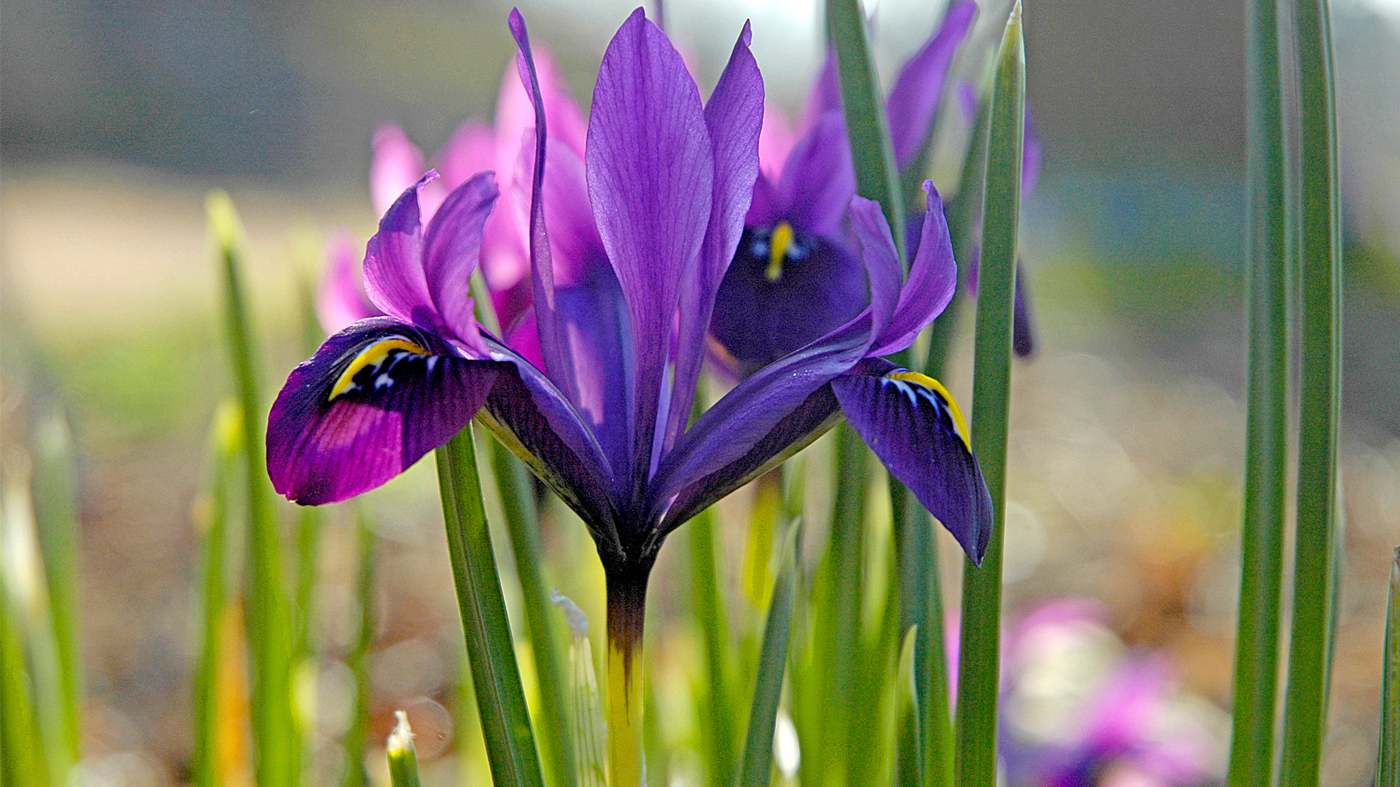June is National Rose Month and the Krasberg Rose Garden puts on quite the show. More than 5,000 roses fill the air with their delicate, sweet scents and countless colors. The three-acre Rose Garden, dedicated in 1985, features more than 200 rose varieties including hybrid teas, floribundas, miniatures, grandifloras, climbers, and shrubs. Old garden roses (also called heirloom or antique roses) and newer All-America Rose Selections are also on display. It’s an alluring feast for the eyes and the nose.
Roses occasionally bloom as early as April and as late as November, but the big display takes place around Father’s Day and again in mid-September. And there are always roses in bloom to enjoy all summer.

The Krasberg Rose Garden in full bloom
Take a stroll along the meandering paths to discover the History of Roses Bed, a collection of antique roses ranging from the earliest wild rose to modern-day hybrids. The Rose Petal Fountain, designed in the shape of a Tudor rose, is a spectacular focal point. Along the way, you’ll find roses that were selected for their hardiness, resistance to disease and insects, long period of bloom, and lower maintenance. Bring a camera and a notebook to capture your inspiration.
Rest under the shady cedar arbor and enjoy the views. Sweet autumn clematis, ferns, hostas, and hanging baskets are just a few of the 34,000 other plants—trees, shrubs, and perennials—that enhance the Rose Garden’s overall design.
Stop and Smell the Roses
The scent of a rose is often hard to describe. Like fine wines, their scent is often a complex collection of sweet aromas. The flowers of many old garden variety roses have hints of cloves or honey. Some gardeners describe the scent as anise, citrus, almond, or pear. The tea roses offer up a trace of sweet orange pekoe while others smell like apricots or lemon.
Old Versus New
The first hybrid tea rose, ‘La France’, made its debut in 1867. Today, there are more than 10,000 hybrid tea roses. Depending on the variety, they may have as many as 30 to 50 petals per flower. Hybrid tea roses can be grown to be cut flowers, single specimens, or planted in mixed beds with perennials and shrubs.
The American Rose Society classifies modern roses as those that were developed after 1867. Old garden roses are those that existed before then. But roses have been around a very long time. Fossil evidence shows their existence even 35 million years ago.
Roses have long been symbols of love and beauty. The petals have been used as a source of perfume and rose hips, and fruits containing the seeds are used in some teas, jams, jellies, and potpourri. The rose was also used as a symbol in fifteenth-century England during the War of the Roses. The white rose symbolized York and the red rose symbolized Lancaster.

Summer sunset in the Rose Garden
Rose Care
During the summer, Garden staff feed the roses with a water-soluble fertilizer. Removing the spent flowers (deadheading) is also done in summer to encourage more flowering. If you leave the spent flowers on the plants, the resulting rose hips provide fall and winter interest as well as food for wildlife. Some rose hips are red and orange while others are deep purple.
Most of the roses are pruned in early spring just as they begin to break dormancy, and again after Thanksgiving. For winter protection, the crowns (base) of the plants are covered with 2 to 3 feet of composted horse manure. The compost is removed in the spring and used as mulch elsewhere in the Rose Garden.
Royalty for your Garden
After you’ve ambled through the Rose Garden, you’ll likely find a rose or two that might suit your home garden. You’ll need a spot that receives six or more hours of sunlight. Before planting, the site should have well-drained soil that’s high in organic matter. Although roses are best planted in the spring, they may also be planted in fall (by September) so that their roots have time to establish before the onset of freezing temperatures.
Roses to Know
Hybrid tea roses have large, round flowers with numerous petals and long stems. Some are fragrant.
Floribunda roses are the result of a hybrid cross between an old-fashioned polyantha rose and a hybrid tea. They are short and full with clusters of flowers.
Grandiflora roses have large flower clusters like a floribunda. They can reach 5 feet and have long stems like hybrid teas.
Shrub or landscape roses include eglantine, hybrid rugosa, polyantha, and hybrid shrub roses. Most are hardy without winter protection in the Chicago climate.
Miniature roses have delicate, tiny clusters of flowers and are ideal plants for containers.
Climbing or rambling roses have very long stems suitable for growing on a trellis, fence, or arbor.
Old garden roses are those that were in cultivation since before 1867, such as the bourbon, centifolia, China, damask, gallica, and moss roses.
Species roses are found in the wild. Some examples are the prairie rose, Carolina rose, Father Hugo rose and rugosa rose.
Nina Koziol is a garden writer and horticulturist who lives and gardens in Palos Park, Illinois.

